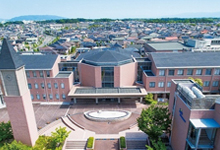In humans, the neural pathway of the vestibular spinal tract is thought to play an important role in the control of anti-gravity muscles when maintaining a posture against gravity (anti-gravity posture) such as sitting or standing.However, until now, it has not been fully clarified whether the vestibular spinal tract excitability is increased in the anti-gravity posture as compared with the non-gravity posture.
Human vestibular spinal tract excitability can be assessed by measuring the degree of H-wave facilitation of the soleus muscle, an antigravity muscle, when given direct current vestibular electrical stimulation (GVS). can. The H wave is one of the evoked myoelectric potentials that reflects the degree of excitement of the motor neurons of the spinal cord, and it is thought that when GVS is given, the vestibular spinal tract is driven and the excitement of the motor neurons of the spinal cord changes. Therefore, it is possible to evaluate the vestibular spinal tract function by measuring the change in the H-wave amplitude of the flutter muscle when GVS is given as a conditioned stimulus.
Hiroaki Tanaka and Associate Professor Yohei Okada of the Master's Program at Kio University used this method to examine whether vestibular spinal cord excitability increases during anti-gravity posture in humans. , It was found that the degree of H reflex (maximum H wave) facilitation is larger than that in the prone and supine positions, which are not anti-gravity postures.
By examining the difference between GVS and H reflex facilitation due to skin irritation in the supine and sitting positions, it was also confirmed that the H reflex facilitation by GVS was not merely due to skin irritation. The degree of H reflex facilitation by GVS was large in the sitting position, although it was similar to the degree of skin irritation in the supine position.That is, the increase in the H reflex facilitating effect by GVS in the sitting position was due to vestibular stimulation, and the result that the vestibular spinal tract excitability was further increased in the sitting position in the antigravity position was strongly supported.
In the future, the researchers explored the possibility of intervention in these pathological conditions by examining the neural mechanism by which vestibular spinal tract excitability increases in anti-gravity posture and by examining the relationship between abnormal posture control and vestibular spinal tract function. I'm going to go.
Paper information:[PLOS ONE] Goal sharing with others modulates the sense of agency and motor accuracy in social contexts

